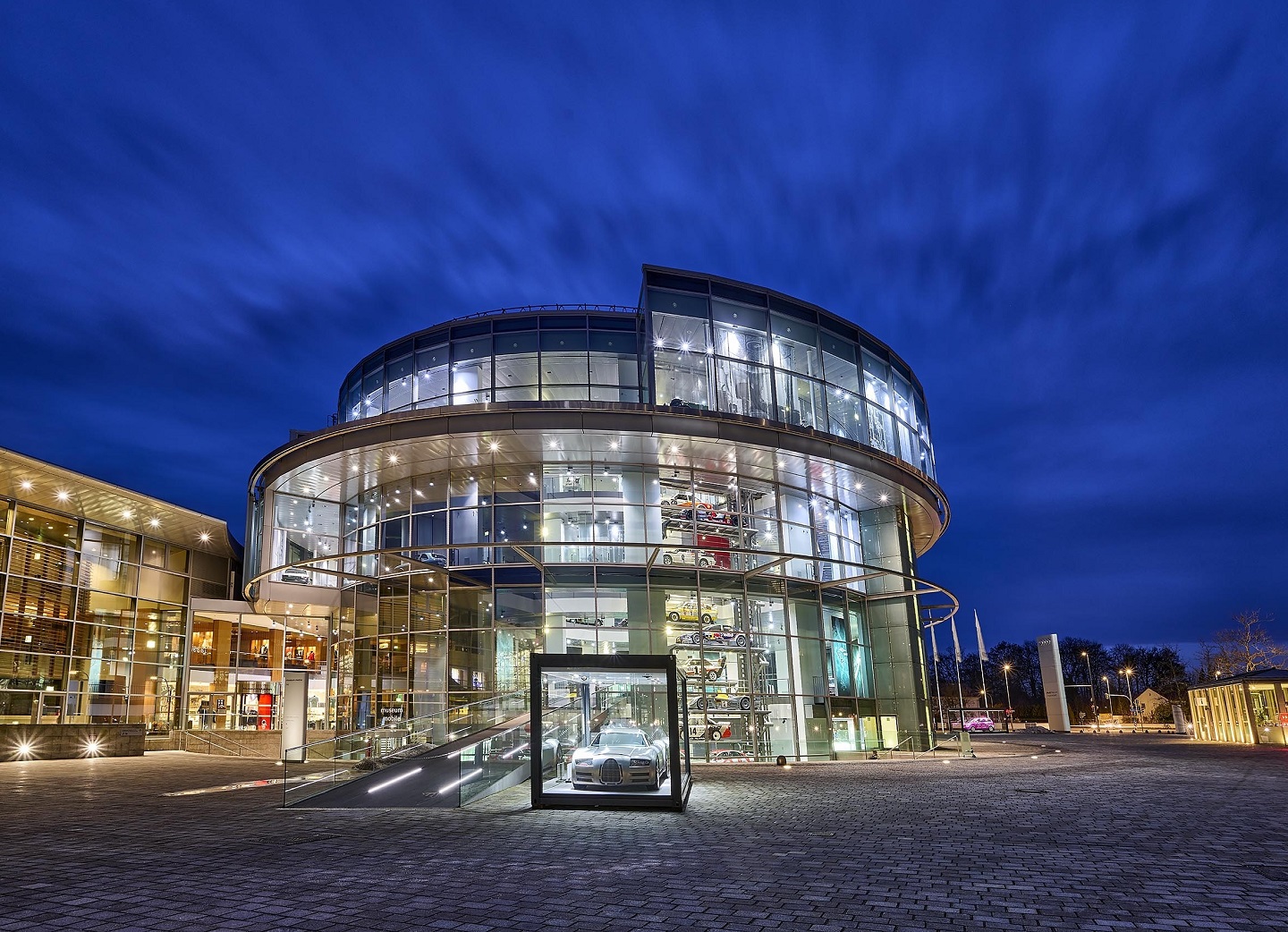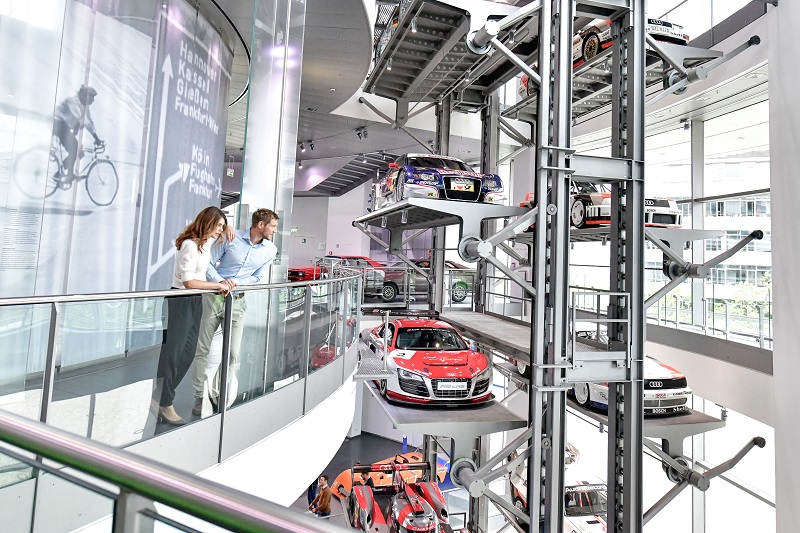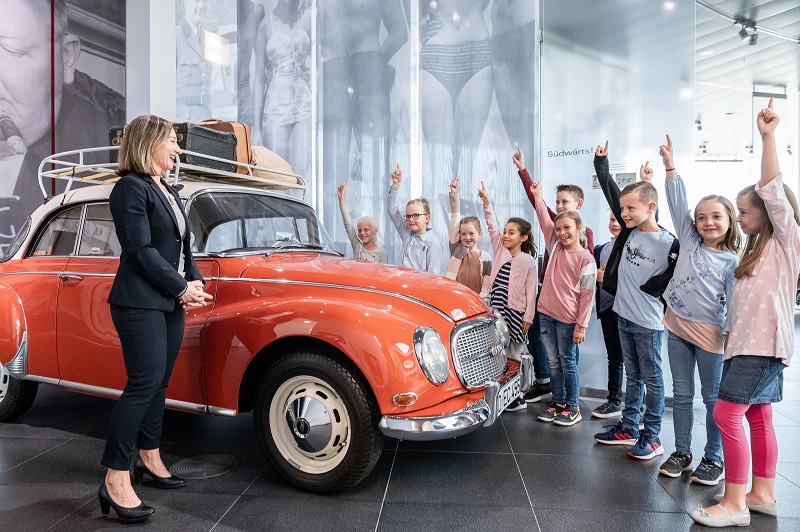
The automobile museum is the focal point of the expansive Audi Forum (All photos: Audi Museum)
The beauty of an object well made is that you do not need to know the mechanics behind it to be awed. Such was the discovery of a non-motorhead during a recent media visit to the Audi Museum in Ingolstadt, Germany.
The automobile museum, which opened in December 2000, is the focal point of the expansive Audi Forum, the headquarters of the German brand that celebrated its 90th anniversary last year. Aesthetics, history and heritage form the framework of the museum which, apart from permanent exhibits, has a rotating display of vehicles that tell arresting aspects of its story.
Looks count in cars and one word wraps up that first impression as you lean back for a fuller view of the four-storey circular steel-and-glass structure: “Wow!” More exclamations follow after you head up to the top floor, from where visitors can circle their way down the thematic levels — each presenting an overview of the industry’s different eras — guided by heritage, innovation and progressive design.
a227248_large.jpg

The museum, designed by German architect Gunter Henn, brings together ideas of mobility, growth and transparency. A sun protection system circles the building following the time of day, changing how the light illuminates the walls. Historic timelines rotate around the centre of the structure as Audi prototypes continuously move up and down the floors on a paternoster, or mechanical elevator.
Audi Museum’s transparent walls invite natural light, which adds a shine to the metal on concept cars, motorcycles and bikes manufactured by the four brands that merged to form Audi Auto AG in 1932. Audi, DKW, Horch and Wanderer, represented in its four-ring logo, laid the groundwork for the many lines and models the marque has rolled out since, sealing its reputation for cutting-edge technology and premium offerings.
Exhibits on display cover more than 120 years of automotive history, with design bridging tradition and innovation. Wide-bodied, angular vehicles that one equates with squat solidity have morphed into streamlined creations that any youngster would not hesitate to rev up for a spin.
Early creations with telling touches that reflect the period in which they were conceived speak to visitors about man’s desire to hit the road in contraptions that were constantly upgraded as destinations stretched further afield, and needs changed.
discovery_tour_for_children_through_the_audi_museum_mobile.jpg

Wood and leather figure in early models, with colour adding charm to box-like vehicles that had room for luggage on the roof. One car even had a seat for the mother-in-law at the back that faces a different direction from everyone else.
For those who dig details, cutaway skeletons of cars and drivetrains depicting how the components connect illustrate what goes on at Audi’s production facilities.
Allow time for a stop at the gift shop, located within the museum, to pick up miniature models of famed lines, caps, sweaters or jackets. Or, just go with the flow with miniature models rotating on a paternoster similar to the gigantic main attraction.
Wrap up your day at the museum having a bite at Audi Forum, which attracts about 400,000 visitors a year. There is also a customer centre and collection area, an art house cinema, a bar and lounge, and manufacturing plant — multiple avenues to experience and enjoy the brand.
This article first appeared on Jan 23, 2023 in The Edge Malaysia.


